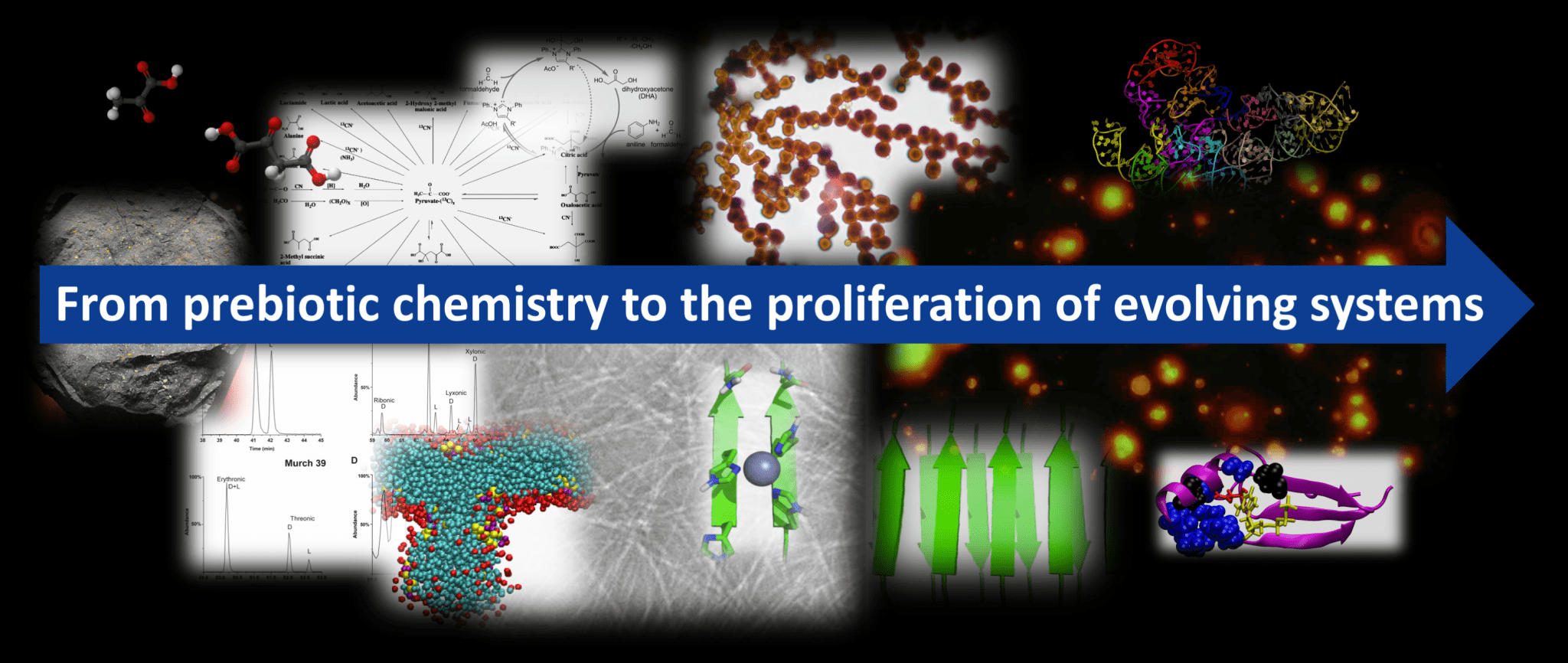Molecular modeling
Molecular modeling and simulations provide information about processes in the emergence of life that are difficult to obtain experimentally. This approach allows results to be generalized in terms of their evolutionary implications for a broad range of systems. We use large-scale, atomic-level computer simulations and kinetic modeling to understand growth and transport in the earliest stages of cellular evolution. This work includes characterizing the interaction of peptides with protocellular membranes, the permeability of protocellularmembranes to specific small molecule building blocks, and the coupling of early metabolic processes to protocellular growth and division.
Recent work by CEL scientists using molecular modeling
- Wei, C., & Pohorille, A. (2021). Fast Bilayer-micelle Fusion Mediated by Hydrophobic Dipeptides. Biophysical Journal. doi: 10.1016/j.bpj.2021.04.012
- Wilson, M. A., & Pohorille, A. (2021). Electrophysiological Properties from Computations at a Single Voltage: Testing Theory with Stochastic Simulations. Entropy, 23(5), 571. pdf
- Pohorille, A., Wilson, M. A., & Shannon, G. (2017). Flexible proteins at the origin of life. Life, 7(2), 23. pdf
Additional work by members of CEL can be found on our publications page






























